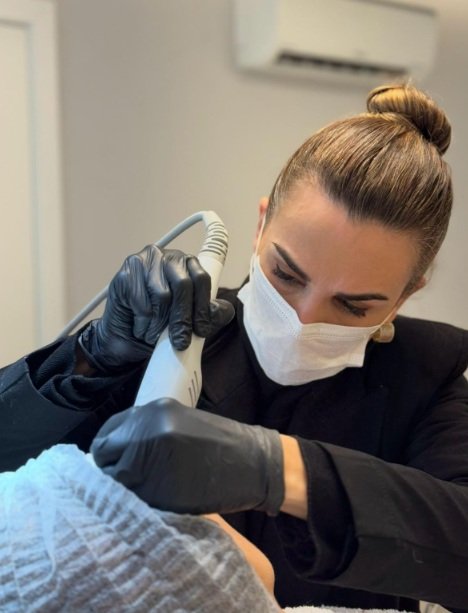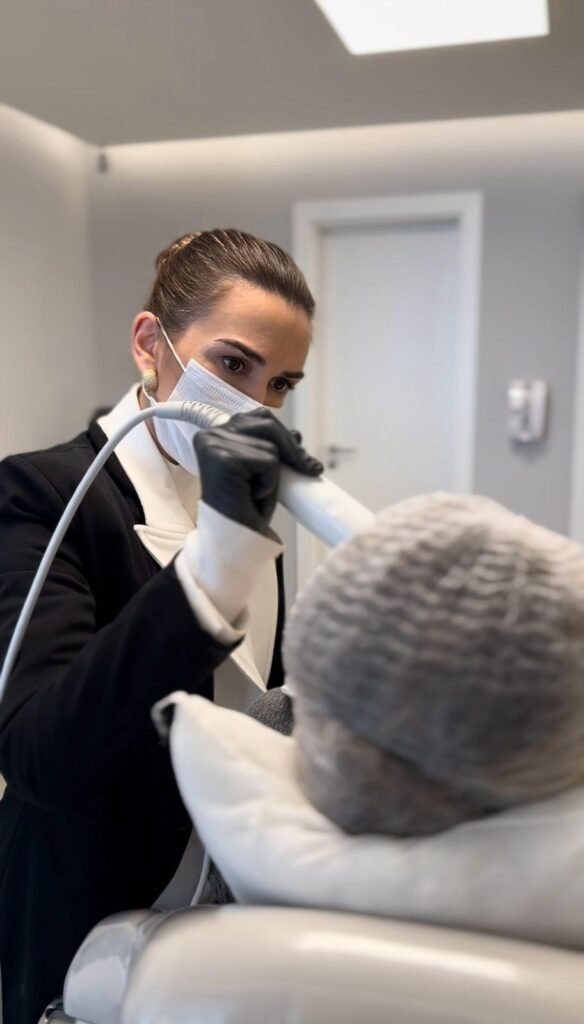Why is winter the best season for skin care?

Winter is here and with it come lower temperatures and cloudier days, the ideal time to invest in skin health. The lower levels of solar radiation make this the perfect time to undergo treatments that renew, lighten and rejuvenate the skin, especially the face.
According to dermatologist and aesthetics specialist *Dra. Mariana Scribel , aesthetic procedures such as lasers, peels and technologies that stimulate collagen have more effective and safe results when performed away from frequent sun exposure.
According to the Brazilian Society of Dermatology (SBD), most aesthetic treatments require strict care with sun protection, which can be a challenge at other times of the year, when we are more exposed.
“In winter, there is a natural reduction in UV radiation, which reduces the risk of blemishes and other side effects. In addition, the cooler weather helps the skin recover, promoting healing and enhancing results,” explains the dermatologist.
In addition to being safer, procedures carried out during the cold months help prepare the skin for the arrival of summer, giving it a more uniform, renewed and healthy appearance.
The most recommended treatments in winter
With the evolution of modern dermatology, facial treatments available on the market offer personalized benefits for each objective, from lightening blemishes to lifting effects. Discover the procedures most recommended by experts for this season.
Peelings
Chemical peels are intense treatments that require strict protection from the sun, which is made easier by the lower incidence of UV radiation during the colder season. Peels promote the renewal of the skin's surface layers, stimulating collagen production and treating a range of problems, such as blemishes, fine lines, enlarged pores and even acne scars.
Among the most recommended are retinoic acid peeling and salicylic acid peeling, chosen according to the skin type and the needs of each patient.

Dr. Mariana Scribel is CEO of Clínica Scribel, in Pelotas/RS. Image/Disclosure.
ZYE Laser
Among the most sought after, the ZYE Laser is indicated for treating blemishes, fine wrinkles and improving facial tone. In addition to stimulating collagen production, it promotes a powerful renewal of skin texture. Because it is versatile and adapts to different skin types, it is widely recommended for those seeking safe and effective results.
Handpico Laser
Considered a breakthrough in the treatment of stubborn spots, the Handpico Laser is ideal for those who want to lighten melasma or renew the skin surface quickly. It works in picoseconds, being less invasive and accelerating recovery.
Fotona Laser
This procedure combines two technologies in a single treatment, acting against wrinkles, sagging skin and acne scars. Fotona is known for offering a visible lifting effect and progressive results over the course of sessions, without the need for prolonged absence from daily activities.
CoolFase
For those seeking toning and firming, CoolFase combines cryotherapy (controlled cold) with radiofrequency, providing an immediate and safe tightening effect. This treatment is an excellent option for those seeking a non-invasive facelift.
Why is winter so good for your skin?
In addition to less sun exposure, the colder period of the year ensures that the skin is less exposed to factors that compromise recovery, such as excessive sweating or prolonged time spent outdoors. These aspects make winter an excellent opportunity to treat problems such as blemishes, fine lines, sagging and changes in texture.
“The main advantage of performing these treatments in winter is the additional safety provided by reduced exposure to UV rays. This allows for a smoother recovery, with fewer chances of complications, such as unwanted blemishes after the procedure,” explains Dr. Mariana, CEO of Clínica Scribel.
She also reminds us that, even in winter, sunscreen care must be maintained rigorously, since UV radiation is present even on cloudy days.
Care and recommendations
Post-procedure care makes all the difference in the results. Daily use of sunscreen, continuous skin hydration and avoiding touching or scratching the treated areas are among the main recommendations, says the specialist.
Furthermore, it is essential to have a consultation with a specialized dermatologist, who will assess the specific needs of each patient and indicate the most appropriate treatment for the skin type.
Be careful with the hot bath
Another important tip is to avoid very hot showers, which, although tempting in cold weather, contribute to dry skin. Using special moisturizers, recommended by a professional, helps to preserve the skin barrier and maximize the benefits of the procedures performed.
Who can benefit from winter treatments?
The treatments mentioned, such as Chemical Peels, ZYE Laser, Handpico, Fotona and CoolFase, are highly recommended for people who want to improve skin texture, smooth out blemishes or rejuvenate their face. However, they are also recommended for those looking to prevent signs of aging and prepare the skin for future exposure, such as during the summer.
Dr. Mariana emphasizes that these procedures are safe, as long as they are performed in specialized clinics and by trained professionals. “The most important thing is to talk to a specialist who understands the patient’s expectations and develops a personalized protocol to ensure not only the best results, but also safety.”

Dr. Mariana Scribel is CEO of Clínica Scribel, in Pelotas/RS. Image/Disclosure.
*Dr. Mariana Scribel (CRM 33655|RQE 28440) is a dermatologist and CEO of Clínica Scribel (Pelotas/RS), one of the largest dermatology technology centers in Rio Grande do Sul.
Specializing in Aesthetic Dermatology, he has specialized in several reference centers around the world, such as Israel, New York and Zurich. In addition, he is a specialist in Medical Trichology (a dermatology specialty that studies and treats hair, scalp and body hair problems) and in Hair Transplantation.
Preceptor of the hair diseases outpatient clinic of the dermatology residency service at PUCRS and a reference in aesthetic dermatology and trichology in RS.
IstoÉ





